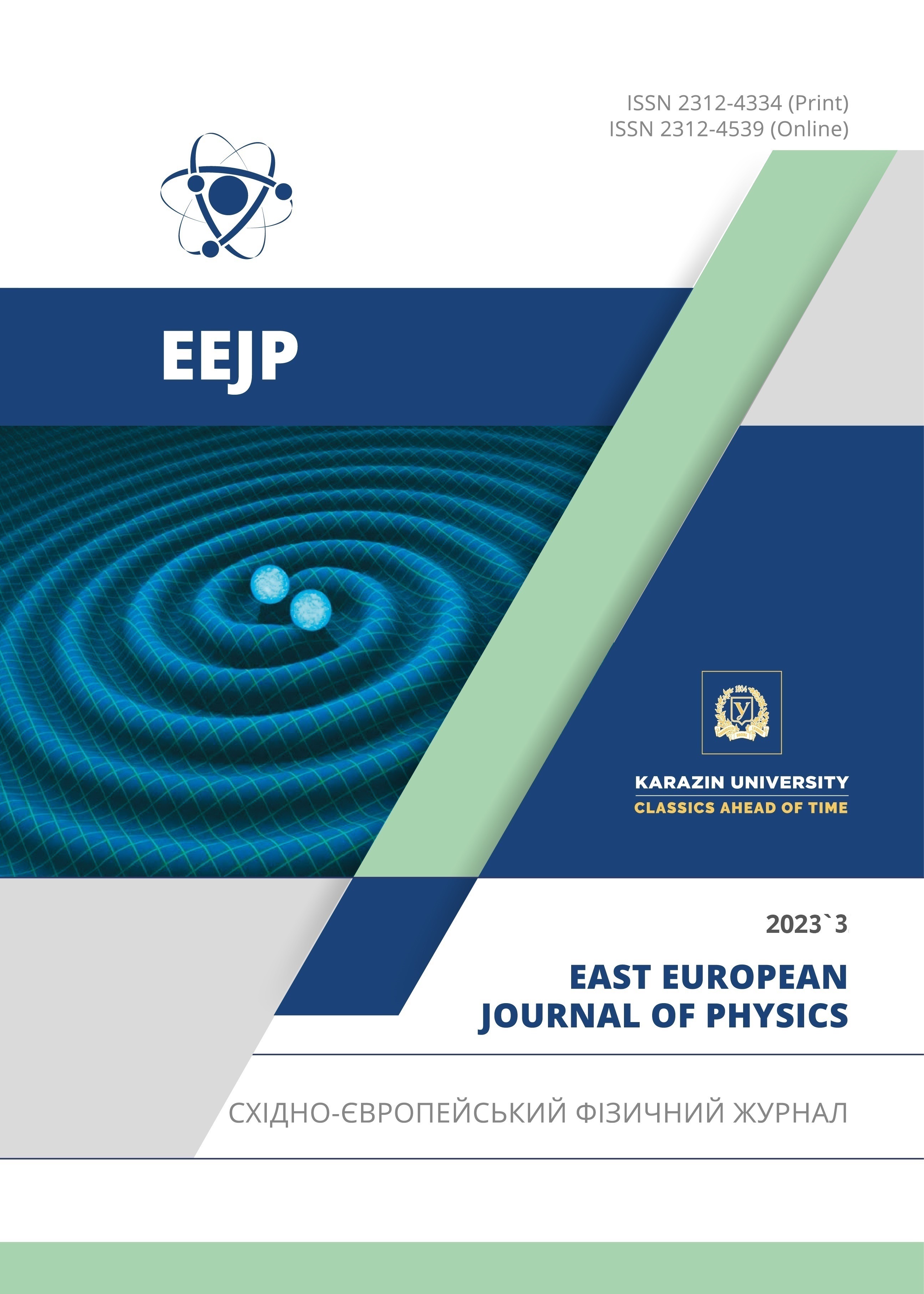Multiple Ligand Simultaneous Docking of Antiviral Drugs and Cyanine Dyes with Proteins
Abstract
Protein nanoparticles are currently regarded as promising biocompatible and biodegradable systems for targeted delivery of different types of pharmacological agents. Prior to fabricating such kind of drug nanocarriers it is reasonable to evaluate the drug-protein binding affinity and possible interaction modes using the computational tools, particularly, the molecular docking technique. The present study was undertaken to evaluate the possibility of creating the protein nanoparticles carrying the antiviral drugs and cyanine dyes as visualizing agents. The components of the examined systems included endogenous functional proteins cytochrome c, serum albumin, lysozyme and insulin, antiviral drugs favipiravir, molnupiravir, nirmatrelvir and ritonavir, mono- and heptamethinecyanine dyes. Using the multiple ligand simultaneous docking technique, it was demonstrated that: i) the drugs and the dyes occupy different binding sites on the protein molecule and do not interfere with each other; ii) the heptamethines AK7-5 and AK7-6 possess the highest affinity for the proteins; iii) among the examined systems the strongest complexes are formed between the heptamethine dyes and serum albumin. Taken together, the results obtained indicate that albumin-based nanoparticles functionalized by the heptamethine cyanine dyes can be used for targeted delivery of the explored antiviral agents.
Downloads
References
A. Sultana, M. Zare, V. Thomas, T.S. Kumar, S. Ramakrishna, Med. Drug Discov. 15, 100134 (2022). https://doi.org/10.1016/j.medidd.2022.100134
T. Fazal, B.N. Murtaza, M. Shah, S. Iqbal, M. Rehman, F. Jaberf, A.A. Dera, et al., RSC Adv. 13, 23087-23121 (2023). https://doi.org/10.1039/D3RA03369D
J.A. Finbloom, C. Huynh, X. Huang, and T.A. Desai, Nature Reviews Bioengineering, 1, 139–152 (2023). https://doi.org/10.1038/s44222-022-00010-8
E. Kianfar, J. Nanobiotechnol. 19, 159 (2021). https://doi.org/10.1186/s12951-021-00896-3
A.L. Martínez-López, C. Pangua, C. Reboredo, R. Campión, J. Morales-Gracia, and J.M. Irache, Int. J. Pharm. 581, 119289 (2020). https://doi.org/10.1016/j.ijpharm.2020.119289
A. Jain, S.K. Singh, S.K. Arya, S.C. Kundu, and S. Kapoor, ACS Biomater. Sci. Eng. 4, 3939–3961 (2018). https://doi.org/10.1021/acsbiomaterials.8b01098
E. Miele, G.P. Spinelli, E. Miele, F. Tomao, S. Tomao, Int. J. Nanomedicine 4, 99–105 (2009). https://doi.org/10.2147/ijn.s3061
J.A. Carvalho, A.S. Abreu, V.T. Ferreira, E.P. Gonçalves, A.C. Tedesco, J.G. Pinto, J. Ferreira-Strixino, et al., J. Biomater. Sci. Polym. Ed. 29, 1287–301 (2018). https://doi.org/10.1080/09205063.2018.1456027
S. Hong, D.W. Choi, H.N. Kim, C.G. Park, W. Lee, and H.H. Park, Pharmaceutics, 12, 604 (2020). https://doi.org/10.3390/pharmaceutics12070604
V.M. Trusova, O.A. Zhytniakivska, U.K. Tarabara, K.A. Vus, and G.P. Gorbenko, J. Pharm. Biomed. Anal. 233, 115448 (2023). https://doi.org/10.1016/j.jpba.2023.115448
P. Csizmadia, in: Proceedings of ECSOC-3, the third international electronic conference on synthetic organic chemistry, (1999), pp. 367-369. https://doi.org/10.3390/ECSOC-3-01775
M.D. Hanwell, D.E. Curtis, D.C. Lonie, T. Vandermeersch, E. Zurek, and G.R. Hutchison, J. Cheminform. 4, 17 (2012). https://doi.org/10.1186/1758-2946-4-17
E. Pettersen, T. Goddard, C. Huang, G. Couch, D. Greenblatt, E. Meng, T. Ferrin, J. Comput. Chem. 25, 1605–1612(2004). https://doi.org/10.1002/jcc.20084
D. Schneidman-Duhovny, Y. Inbar, R. Nussinov, and H.J. Wolfson, Nucl. Acids. Res. 33, W363 (2005). https://doi.org/10.1093/nar/gki481
M.F. Adasme, K.L. Linnemann, S.N. Bolz, F. Kaiser, S. Salentin, V.J. Haupt, and M. Schroeder, Nucl. Acids. Res. 49, W530 W534 (2021). https://doi.org/10.1093/nar/gkab294
E.F. Pettersen, T.D. Goddard, C.C. Huang, G.S. Couch, D.M. Greenblatt, E.C. Meng, and T.E. Ferrin, J. Comput. Chem. 25, 1605 (2004). https://doi.org/10.1002/jcc.20084
Copyright (c) 2023 Olga Zhytniakivska, Uliana Tarabara, Kateryna Vus, Valeriya Trusova, Galyna Gorbenko

This work is licensed under a Creative Commons Attribution 4.0 International License.
Authors who publish with this journal agree to the following terms:
- Authors retain copyright and grant the journal right of first publication with the work simultaneously licensed under a Creative Commons Attribution License that allows others to share the work with an acknowledgment of the work's authorship and initial publication in this journal.
- Authors are able to enter into separate, additional contractual arrangements for the non-exclusive distribution of the journal's published version of the work (e.g., post it to an institutional repository or publish it in a book), with an acknowledgment of its initial publication in this journal.
- Authors are permitted and encouraged to post their work online (e.g., in institutional repositories or on their website) prior to and during the submission process, as it can lead to productive exchanges, as well as earlier and greater citation of published work (See The Effect of Open Access).








